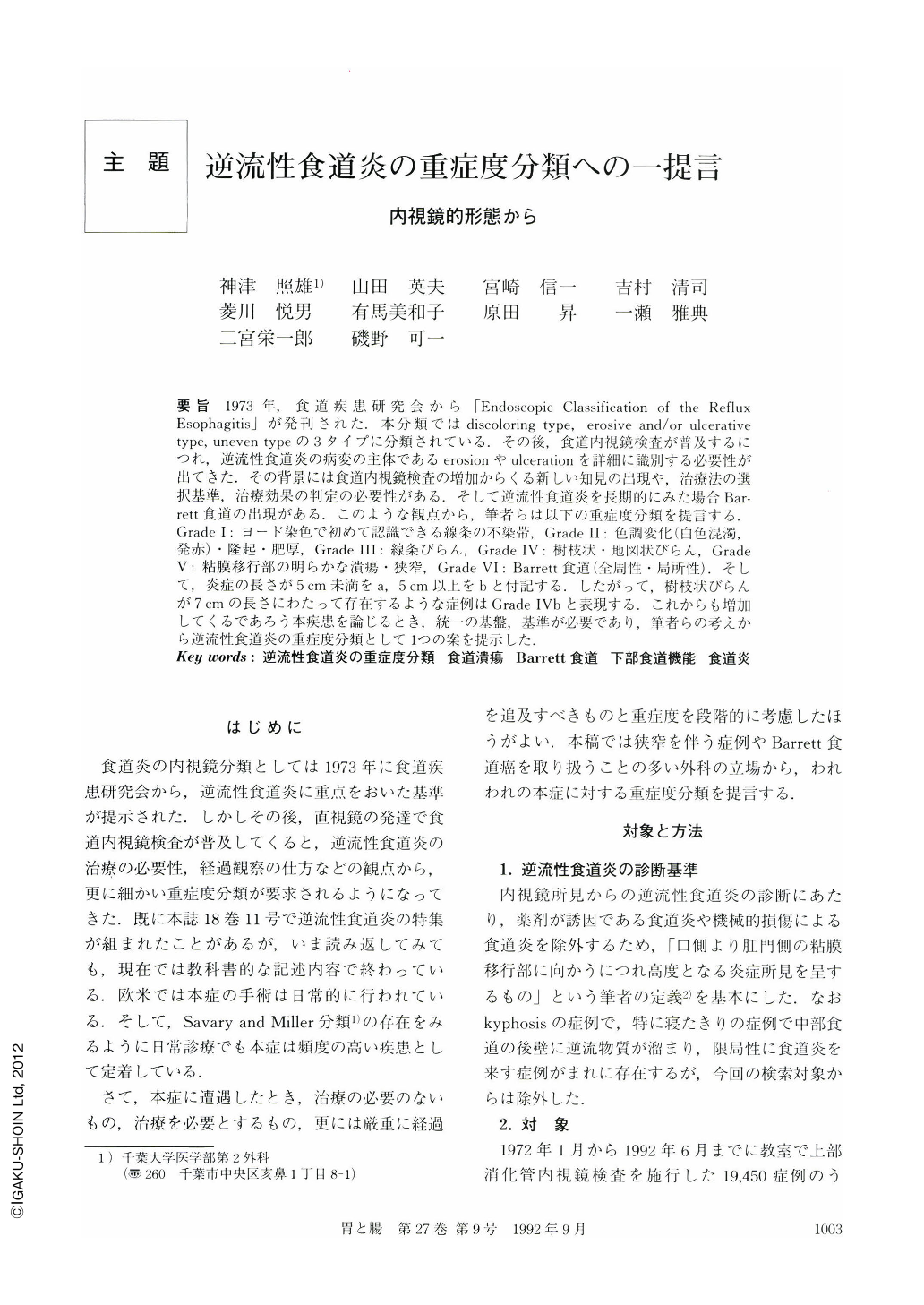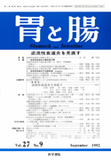Japanese
English
- 有料閲覧
- Abstract 文献概要
- 1ページ目 Look Inside
要旨 1973年,食道疾患研究会から「Endoscopic Classification of the Reflux Esophagitis」が発刊された.本分類ではdiscoloring type,erosive and/or ulcerative type, uneven typeの3タイプに分類されている.その後,食道内視鏡検査が普及するにつれ,逆流性食道炎の病変の主体であるerosionやulcerationを詳細に識別する必要性が出てきた.その背景には食道内視鏡検査の増加からくる新しい知見の出現や,治療法の選択基準,治療効果の判定の必要性がある.そして逆流性食道炎を長期的にみた場合Barrett食道の出現がある.このような観点から,筆者らは以下の重症度分類を提言する.Grade Ⅰ:ヨード染色で初めて認識できる線条の不染帯,Grade Ⅱ:色調変化(白色混濁,発赤)・隆起・肥厚,Grade Ⅲ:線条びらん,Grade Ⅳ:樹枝状・地図状びらん,Grade Ⅴ:粘膜移行部の明らかな潰瘍・狭窄,Grade Ⅵ:Barrett食道(全周性・局所性).そして,炎症の長さが5cm未満をa,5cm以上をbと付記する.したがって,樹枝状びらんが7cmの長さにわたって存在するような症例はGrade Ⅳbと表現する.これからも増加してくるであろう本疾患を論じるとき,統一の基盤,基準が必要であり,筆者らの考えから逆流性食道炎の重症度分類として1つの案を提示した.
Endoscopic classification of the Reflux Esophagitis was issued from Japanese Society of Esophageal Diseases in 1973. According to this classification, reflux esophagitis is graded into three types, namely; discoloring type, erosive and/or ulcerative type and uneven type. Following the issue of this classification, with the advance of endoscopic examination, it has been necessary to discriminate erosion and ulceration in this disease in more detail. This more detailed classification is required because an increasing number of cases has provided new knowledge about the disease, choices of treatment vary according to classification, and judgement about the efficacy of treatment should be related to classifications. A long-continued history of this disease is often associated with Barrett's esophagus. With this in mind, we propose the following classification. Grade Ⅰ: a linear lesion detectable only with an iodine dyeing method. Grade Ⅱ: a change of color of the esophageal mucosa (muddy white change, redness), protruding, thickness. Grade Ⅲ: a linear erolion. Grade Ⅳ: a branch-or map-like erosion. Grade Ⅴ: an ulceration or stenosis near or around the esophago-gastric junction. Grade Ⅵ: Barrett's esophagus. An additional remark of“ a” is noted in the case with a less than 5 cm-long lesion, and “b” in more than 5 cm-long; e.g. the case with a 7 cm-long branch-like erosion is mentioned as Grade Ⅳb. When we discuss this disease, a unified standard of estimation is necessary, we present one idea for grading this disease.

Copyright © 1992, Igaku-Shoin Ltd. All rights reserved.


